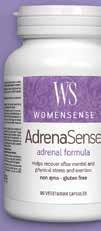




















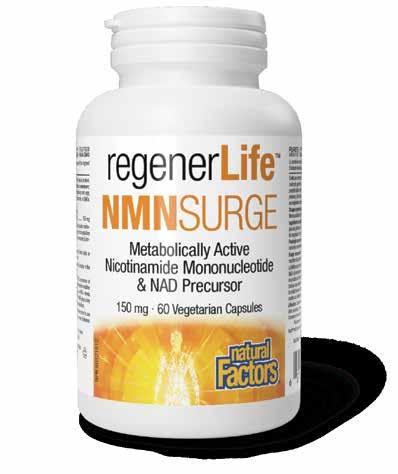

Aging is caused by so many processes, however, DNA and telomere damage as well as mitochondrial dysfunction are the leading causes. Several natural compounds are pivotal to human health and healthy biological aging, notably NAD+.
Did you know that by middle age, our NAD+ levels have plummeted to half that of our youth?
Reduced NAD+ levels can result in fatigue and decline in metabolism – leading to weight gain and increased risk of developing
type 2 diabetes, as well as age-related cognitive decline and muscle loss. Numerous studies have demonstrated that boosting NAD+ levels can reverse mitochondrial dysfunction and improve insulin sensitivity. One of the most effective ways to boost NAD+ levels is by supplementing with nicotinamide mononucleotide, also known as NMN. NMN is a precursor to NAD+, and is rapidly absorbed and converted to NAD+. NMN is shown to be superior to that of another NAD+ precursor called nicotinamide riboside (NR).
Women’s Voice board weighs in on:
LIVING A LONG, ACTIVE, FULFILLING LIFE!
Setting Your Health Game Plan – by Marita Schauch, ND

Women Who Inspire Us Meet Joan MacDonald
Understanding Phytoestrogens – by Stephanie Rubino, ND

The OAT Axis & Hormone Balance – by Stephanie Rubino, ND
Prevent Hormones from Sabotaging Weight Loss – by Julia Solnier, PhD
Exercise Snacks Build Muscle & Increase Longevity – by Kate Rhéaume, ND

The Blue Zones No Invitation Required – by Karlene Karst, BSc Nutrition
Fat Storage to Fat Burning – by Karen Jensen, ND
The New Lipo – by Kate Rhéaume, ND
The 911 on Bowel Health – by Marita Schauch, ND

Spice Things up Secret to Health & Longevity!
Fertility Advice: Eat Organic 44 Fat Cells’ Fight against Silent Inflammation – by Jennifer Brix, ND
Harness the Power of Nutrition to Fight Chronic Disease – by Stephanie Rubino, ND
Beat Bladder Infections for Good – by Jennifer Brix, ND
Photo: Michael Gomez PhotographyAt Women’s Voice®, we are committed to providing our readers with real health solutions from real physicians. To ensure our editorial excellence, we have assembled medical professionals who are dedicated experts and leaders in natural health to serve on Women’s Voice Medical & Science Editorial Advisory Committee.
Dr. Kate Rhéaume is a graduate and former faculty member of the Canadian College of Naturopathic Medicine. A leading expert in natural medicine, Dr. Kate is the author of the best-selling book Vitamin K2 and the Calcium Paradox (HarperCollins).
Dr. Karen Jensen was in clinical practice for 25 years and although she is retired, she continues to write books and educate on the naturopathic approach to wellness. She is the author or co-author of seven books; her most recent is Women’s Health Matters: The Influence of Gender on Disease.

Karlene Karst holds a BSc in Nutrition and is the founder of the Sea-licious® line of products. She is a mom of three active kids, an avid food and recipe creator, and an author. In her latest cookbook, This Kitchen Is for Dancing, Karlene shares 100 delectable, health-conscious recipes. Follow Karlene on Instagram @karlenekarst



Dr. Julie Reil is an internationally recognized physician, health and nutrition advocate, speaker, and Women’s Voice author. She developed the Genityte® urinary incontinence procedure and the Triple Tone Treatment®. Dr. Reil founded Shiloh Medical Clinic in Billings, Montana.


Dr. Marita Schauch is the author of two books, Making Sense of Women’s Health and Collagen Myths & Misconceptions. She also co-authored The Adrenal Stress Connection. In addition to her clinical practice, she lectures across North America, educating people on positive lifestyle choices.
Editor: Nancy Frances Cheeseman
Deputy Editor: Brinda Navjee
Editorial Assistant: Heba Sourour
Art Direction: Stephen Rank, Beata Stolarska
Graphic Designers: Rut Shapira, Jasper van Meurs, Mark Cawker, Jessica Ranallo-Baek, and Felicia Yee
PUBLISHED BY
Women’s Voice Magazine
104–3686 Bonneville Place Burnaby, BC V3N 4T6
For general inquiries, please email us at info@womensvoice.com
Subscribe to our newsletter and be the first to know about women’s health shows and lectures.
Dr. Stephanie Rubino is a licensed naturopathic doctor in clinical practice focusing on preventive health. As a wellness educator, she highlights the importance of nutrition, lifestyle, and the safe use of supplements. She has been a contributor to various health publications and has appeared on TV news shows.

Dr. Jennifer Brix is a licensed naturopathic doctor and health educator with a passion for empowering her patients to achieve optimal health. In clinical practice, she focuses on treating digestive complaints, hormone imbalances, and brain-related disorders, and has been recognized as a top naturopathic doctor in her community.

Dr. Gaetano Morello is a published author and licensed naturopathic physician. Recently he has been appointed as a Clinician at the newly created Complex Chronic Disease Program located at BC Women’s Hospital in Vancouver. He is the first naturopathic doctor to hold such a position at a major North American hospital.

Dr. Julia Solnier has a doctorate in Pharmaceutical Sciences from the University of Graz, Austria. She is an expert in pharmacognosy (medicinal plant research) with lecturing experience on herbal medicine. Julia is a Research Scientist at Factors Group and ISURA®. She focuses on conducting clinical trials and developing innovative delivery solutions.

Dr. Michael Lyon is a UBC faculty member and is a published researcher in the fields of nutrition, appetite regulation, dietary fibre, and blood sugar regulation. He is Board Certified in Obesity Medicine through the American Board of Obesity Medicine and he completed a three-year family practice residency in 1988.
Only products exclusively distributed to natural health stores will be advertised in this magazine.
EDITORIAL NOTE
The information in this magazine is for educational purposes only. It should not be used as a substitute for the advice of a qualified and licensed health professional. All rights reserved. No part of this publication may be reproduced, copied, sold, or distributed without prior authorization. All article references can be found at womensvoicemagazine.com
Women’s Voice® is a registered magazine in Canada and the United States.
Canada: 1811559 / USA: 87249676
Real Solutions by Real Physicians for Real Women’s Needs®
The keys to living your longest and best life are well within your reach – that’s the message we received from our Women’s Voice editorial board when we asked for their tips on health, longevity, and stress management. These are the long-time practitioners and avid researchers whom we always consult about savvy health and lifestyle advice, knowing that they bring a wealth of data to support their tips and recommendations. Many of their suggestions focus on daily choices, such as choosing wholefoods, staying active, and supplementing with concentrated nutrients.
Special thanks to Joan MacDonald, who shares her incredible transformation in our “Women Who Inspire Us” series. At 70, and while being extremely sick, she made a 180. With the support of her daughter Michelle, she is now the epitome of health, proving you can reclaim your health no matter your age.
Additional articles include “The OAT Axis & Hormone Balance,” “Beat Bladder Infections –for Good,” “The 911 on Bowel Health,” and how to “Harness the Power of Nutrition to Fight Chronic Disease.” Plus learn how to hack your metabolism to move from “Fat Storage to Fat Burning”!
Thank you to everyone on the Women’s Voice team who works passionately to bring content to our readers related to health, wellness, and our planet.
In Health – WV magazine
About WV

Printed on FSC ® Mix paper using recycled inks.
We are building a global community of women of all ages, shapes, sizes, and backgrounds who care deeply about each other, natural health, and our planet’s delicate ecosystem. Our team comprises doctors, nutritionists, holistic professionals, and a village of passionate health advocates to be a source of inspiration and positive change in your life and for the health of our planet.
WV magazine is distributed exclusively in natural health stores and online. At WV, we are firm supporters of our retail partners across North America who have worked tirelessly over the past 80 years to support small, humane farms that promote food security, elevate the benefits of organic products, and strengthen local economies. These stores work hard to bring health and wellness to every city, large or small, and make daily decisions to help reduce the planet’s carbon footprint.
At WV magazine, our commitment to Planet Earth is strong and getting stronger!
The print you’re reading today consists of recycled inks, and every page is now being made from FSC® certified paper. This FSC® certified paper is a combination of material from well-managed FSC certified forests and recycled material. The Forest Stewardship Council® (FSC®) employs independent third-party auditors to monitor the supply chain, ensuring that FSC® Mix paper maintains forest health and protects fish and wildlife habitats. Women’s Voice sees the move to FSC® paper as a step toward long-term, environmentally conscious sustainability.
When my patients come looking to make healthy lifestyle changes, I first say there is no better time than the present! The greatest gift you can give yourself is the gift of health.
People who take the time to focus on their health live longer, happier lives.




Let’s get clear about how you want to feel.
GET CLEAR – What does peak health mean to you? How do you want to feel? Do you want to feel well-nourished, energized, mentally clear, and full of life, with plenty of energy to explore the activities you love? Getting specific about how you want to feel will help you get clear on the action steps needed to get there.
EXAMPLE: If you want to feel more energized, perhaps choosing a new movement practice or lifestyle habit (like going to bed earlier) would be an excellent action to hone in on.
START SMALL – Start with small, attainable action steps and goals when you are clear on how you want to feel. Choose something that you know you can commit to. Our brains are wired for success, and you will more likely stick with something if you are “winning.”
EXAMPLE: Start out with a workout routine 1–2 days a week, as opposed to jumping into a workout every day, and increase it from there.
BUDDY UP – Accountability requires a team effort to help keep us on track. If you have a friend or loved one willing to be your accountability buddy and join in on this new goal, that extra presence and support can help you follow through.
EXAMPLE: If you want to drink more water daily, and your friend is on board with being your accountability buddy, you can check on each other throughout the day, celebrating each other in your hydration wins.

A sedentary lifestyle increases health risks such as obesity, heart disease, stroke, high blood pressure, diabetes, and certain cancers, so make movement a top priority. Peak health also leads to improved mood and mental well-being. It doesn’t need to be complicated. Taking a daily after-meal walk or doing a 10–20-minute yoga routine (find them on YouTube for every body type and experience level) are simple ways to up your movement. You can also park further away from the store to get the extra steps in, take the stairs, walk while you talk on the phone, or have a dance break between work meetings. Trust me, a dance break or a good stretch between work meetings will energize you and fill your mind with creativity.
When we get too hungry, our blood sugar and energy levels drop, so this is why meal planning is critical to peak health. Peak health gives us the capacity to do all the things we love.
To set yourself up for balance in the kitchen, having the essential food groups on hand will make meal prepping a breeze. A well-balanced diet includes protein, fibre, whole grains, and healthy fats. Choose your favourites from each, and prepare them when you have time, so you can mix and match them in dishes throughout the week. Your menu doesn’t have to be written in stone and can evolve as the days go by, but having the basics covered will go a long way when you’re tired at the end of the day. For example, cooking lots of chicken or lentils on Monday, so you have protein on hand to top a rice bowl or salad, will free you up to make great choices when you’re super hungry.
Having dietary supplements on hand makes supporting your gut health even easier. The second brain in your body is your gut, which makes a healthy microbiome crucial for health, mood, and well-being.
Apple cider vinegar (ACV) contains pectin, a prebiotic fibre that aids digestion, encourages good bacteria, and clears excess cholesterol from the gut. ACV is excellent support for a healthy gut. You can buy ACV in a concentrated liquid, which you can incorporate into recipes or take in capsule form as a dietary supplement.
I hope this helps inspire new movement and nourishment to get you on the path to peak health. Find an accountability buddy and give them a high five – you’ve got this!

“As a 30-something-year-old woman and nutritionist (who’s not getting any younger), collagen has been one unique product that I had my eye on. Why collagen?


Unfortunately as we age, collagen density and dermal thickness decrease, and this lack of collagen cues the all-too-familiar signs of skin aging. No wonder we’re obsessed with trying to get more of it.
What some critics say are concerns:
Admittedly, collagen has been a hot topic and for good reason. We all want to look younger, so a product that touts any sort of beauty benefits will no doubt come under a lot of scrutiny. In recent years there has been a growing body of evidence and even larger review studies that collectively point to the same conclusion – collagen supplements


promote healthier looking skin, and decrease visible signs of aging, without any adverse side effects. Another concern that has been shared is that there may be a risk of contaminants and heavy metals in collagen. Although there is merit to this, the truth is that not all collagen supplements are created equally. When choosing a collagen supplement that is bovine-sourced (cattle), it’s best to look for a product that is pasture-raised, grass-fed, and steroidal-hormone- and antibiotic-free. When choosing a marine-based collagen supplement, always look for one that is extracted from wild-caught and sustainably sourced fish, like whitefish.”
NATASHA PAROUTIS, NutritionistWhy Total Body Collagen™? Revitalize, restore, and protect your skin from within. Support your muscles, joints, and ligaments.




 – JULIE REIL, MD and Beauty Expert
– JULIE REIL, MD and Beauty Expert
– JULIE REIL, MD and Beauty Expert
– JULIE REIL, MD and Beauty Expert


“When it comes to feeling good and looking good, I am going to share my secret weapon… it is called Total Body Collagen. I take it with a vitamin C supplement in the morning for my hair, skin, nails, and bones, and it couldn’t be easier. With Total Body Collagen, my hair is thicker and healthier and I lose less hair in the shower and in my brush. Fine lines and wrinkles on my face are getting better as I age and my skin looks and feels more hydrated. My nails are stronger with fewer ridges and grow much faster. As an added bonus, Total Body Collagen supports my bone matrix for healthy teeth and bone density."
“When it comes to feeling good and looking good, I am going to share my secret weapon… it is called Total Body Collagen. I take it with a vitamin C supplement in the morning for my hair, skin, nails, and bones, and it couldn’t be easier. With Total Body Collagen, my hair is thicker and healthier and I lose less hair in the shower and in my brush. Fine lines and wrinkles on my face are getting better as I age and my skin looks and feels more hydrated. My nails are stronger with fewer ridges and grow much faster. As an added bonus, Total Body Collagen supports my bone matrix for healthy teeth and bone density."
Is collagen good for men? Absolutely.
Is collagen good for men? Absolutely.
Does it help reduce the signs of aging?
Does it help reduce the signs of aging?
Yes, collagen hydrates our skin, reducing wrinkles and giving us
Yes, collagen hydrates our skin, reducing wrinkles and giving us that plump youthful glow, healthy hair, and skin.

hair, and skin.

that plump youthful glow, healthy

Hi, my name is Joan MacDonald, and I am 76 years old. Six years ago, I was 5 ft 3 in, 198 lb, and had a 39-in waist. I was on medication for high blood pressure and acid reflux. I had terrible edema in my ankles, my arthritis was excruciating, and I had di culty walking up and down stairs. I was tired, emotional, and in very poor health. Does any of this sound familiar to you? My daughter Michelle, who works in fitness, came to me on the verge of tears. She said I had to make some choices, because if I continued on my path, I would end up even worse o and probably on more medication. She o ered me the opportunity to work with her and take part in an online group with other women who wanted to change old unhealthy habits and take better care of themselves.





I did not know how arduous this journey would be, and I was often in tears over the technology, but I never gave up. I kept telling myself, “I don’t mind if the changes are slow; I will go at my
pace, but this time, the changes will last the rest of my life.” The first part of the program required us to prepare an image collage of our starting point. It is human nature, especially on a long journey, to wonder if we are on the right track. But as the months rolled by, with Michelle’s health guidance, we were all changing. The weight and the inches were coming o !
My confidence was growing, and we were all cheering each other on.
“Understanding the ideal ratio of macros your body needs will help you lose weight, build lean muscle, and keep you satisfied.”
Fast forward six years into my journey, and I can honestly say I am a di erent woman than when I started. I feel healthy, strong, and fit, and I understand the importance of macros (short for macronutrients) to create balanced meals. Three categories of nutrients provide the body with energy: carbohydrates, fats, and proteins. So, when you count macros, you are measuring the grams of protein,
carbs, or fats you consume. When making dietary changes or trying to lose weight, many people struggle. But understanding the ideal ratio of macros your body needs will help you lose weight, build lean muscle, and keep you satisfied. I can also move around confidently in the gym and understand the importance of resistance training to build lean muscle. At the gym, I love connecting with other women and men who choose to live healthier lifestyles. I’ve found that this new way of living has allowed me to meet and encourage many others to do the same, especially considering my age, how overweight I was, and how far I’ve come.
If you’re ready and want to make positive health changes, I will tell you it is not an easy journey, but every small step forward will give your health back to you and a life worth living. Never think I can’t do this at my age or that I have too much weight to lose to change my life. My story will give you the confidence and assurance that you can change, because if I can do it at 70 years old, you absolutely can, too!
@trainwithjoan
Follow Joan on Instagram @trainwithjoan or visit her website trainwithjoano cial.com

Available on Amazon December 2022.

“The journey is not easy, but every small step forward will give your health back to you and a life worth living.”Photos: Courtesy of Michelle MacDonald








Alpha®
Keto- and paleo-friendly brain and body fuel, Organic MCT Oil provides energy for workouts and weight loss, and support for agerelated cognitive decline. Perfect in smoothies or your morning co ee!




DME Organic Virgin Coconut Oil is certi ed fair trade and is hand pressed directly from fresh coconuts on family-owned farms in 90 minutes. Delicious and safe for cooking and baking!








alphahealth.ca

































CONFUSED ABOUT PHYTOESTROGENS? ONGOING DEBATES ABOUT THE BENEFITS AND SAFETY OF PHYTOESTROGENS HAVE CREATED MISUNDERSTANDING AND SKEPTICISM. AT WOMEN’S VOICE, WE WANT TO SHARE SOME KEY FACTS ABOUT THESE NOTABLE COMPOUNDS, BUT STAY TUNED FOR A MORE IN-DEPTH ARTICLE COMING SOON!
Our bodies are exposed to three sources of estrogens: endogenous estrogens, xenoestrogens, and phytoestrogens. With similar chemical structures as human estrogen, phytoestrogens are natural, plant-derived dietary compounds that exert a variety of health benefits.
Isoflavones, coumestans, and lignans are major phytoestrogens found in our diet. Soy is a popular phytoestrogen food that contains isoflavones, particularly genistein, daidzein, and glycitein. Remember to always select organic and nonGMO soy products. Coumestans can be found in spinach, brussels sprouts, pinto and lima beans, alfalfa and clover sprouts. On the other

hand, flaxseeds, whole grains, fruits, vegetables, and legumes are sources of lignans. In addition to food sources, phytoestrogens can be found in nutritional supplements.
health?
Current research indicates that phytoestrogens are beneficial for health, with their impact varying during different life stages. Phytoestrogens act as selective estrogen receptor modulators (SERMs) because of their ability to bind to estrogen receptors and exert weak estrogen-like activity. Antioxidant and anti-inflammatory effects, inhibiting cancer cell growth, and improving insulin sensitivity, glucose and cholesterol metabolism are other observed benefits.
Because phytoestrogens and human estrogen have similar chemical structures, there has been concern regarding the safety of phytoestrogen’s estrogenic activity. However, current research suggests that consuming phytoestrogenrich foods is safe and beneficial for the general population, including women with breast cancer or individuals at risk. The use of high doses of phytoestrogens continues to be investigated. Keep in mind that age, the source and dose of phytoestrogens, and microbiome status are a few factors that can impact how phytoestrogens affect the body.
RESEARCH HAS NOTED THE POSITIVE IMPACT OF PHYTOESTROGENS ON THE PREVENTION OF MENOPAUSAL SYMPTOMS, CARDIOVASCULAR DISEASE, OBESITY, TYPE 2 DIABETES, LIVER DISEASE, AND SKIN AGING.

People who live a long, healthy life have something in common: they possess a strong work ethic, give back to their community, maintain a positive attitude, eat simple, whole foods, and enjoy close bonds with family. It is never too late to incorporate these traits into your life to live longer, regenerate your zest for life, and find peace within the world’s chaos.
The keys to living your longest and best life are well within your reach – that’s the message we received from our Women’s Voice editorial board when we asked for their tips on health, longevity, and stress management. These are the long-time practitioners and avid researchers whom we always consult about savvy health and lifestyle advice, knowing that they bring a wealth of data to support their tips and recommendations. Many of their suggestions focus on daily choices, such as choosing wholefoods, staying active, and supplementing with concentrated nutrients.
Michael T. Murray is one of the world’s leading authorities on natural medicine. Dr. Murray is a graduate and faculty member of Bastyr University, and he serves on its Board of Regents. He is the author of over 30 books, including the acclaimed bestseller The Encyclopedia of Natural Medicine (Third Edition).

Why do we wish for longevity? “For me, life is about purpose, mission, growth, and being as healthy as possible, so that I can have the full spectrum of the human experience. I could not imagine not wanting to live life to its full potential.” Dr. Murray advises his patients to “eat to control blood sugar levels,” including five or more servings of vegetables daily and two servings of fruit. He adds, “Focus on organic foods, reduce the intake of meat and
other animal products, and keep salt intake low. Choose high-quality protein supplements and eat the right type of fats. The goal is to decrease your intake of saturated fats and omega-6 fats found in most vegetable oils, and to increase the intake of monounsaturated fats from nuts, seeds, avocados, and olive oil while ensuring an adequate intake of the omega-3 fatty acids found in fish and flaxseed oil.” To deal with stress, Dr. Murray suggests four focuses: getting restful sleep, stabilizing blood sugar, nourishing both body and brain, and developing good lifemanagement skills. This, he says, makes up the “cohesive fabric” that supports us in dealing with life’s challenges.

Gaetano Morello is an author, researcher, and board-certified naturopathic doctor at the est Vancouver Wellness Centre. He received his BSc in cell biology from the University of British Columbia, and his PhD in naturopathic medicine from Bastyr University. For the last 10 years, he focused his practice on gastrointestinal health and chronic disease.
Studies have highlighted how identical twins, separated at birth, can grow up looking quite different from one another – with obvious disparities in muscle and fat distribution, and vast differences in health status.
“Know that your DNA is not your destiny”
—
“Factors such as stress, diet, and nurture (namely, the relationships around you) have been shown to influence the expression of our DNA,” Dr. Morello explains. To achieve our best possible genetic inheritance, he recommends a protein intake of 25 g twice a day, and taking steps to control stress. “What we do in life echoes in eternity,” he says, quoting an old saying. “Whatever we put out is what we’ll find. If we are hungry and all we have is a corn cob, eating it leaves us with nothing. But if half the corn cob is dried and given back to the land, it will multiply and give sustenance for a long time. Sharing and giving, loving and supporting are similar acts; they create peace within and soothe what we may call stress.”
Equally important, countering stress prevents leaky gut syndrome from allowing toxins into the bloodstream and damaging the body, much as a leaky roof damages a home. “When water lands on your leather sofa, it creates mould, and this is like developing eczema. If it hits the hinges on the doors, they rust and create arthritis. If it hits your television, it’s like getting memory loss.” He says that instead of fixing health problems as they arise, we ought to address the big issue – stress – to “close the holes on the roof.”
— Kate Rhéaume, ND
Kate Rhéaume is a Canadian expert, author, and educator in natural medicine. Kate regularly reports on television and the radio.

“I think the most important driving force in my life and that of my patients is our power to create healthier habits by making little changes over a long time. It makes living a healthy lifestyle feel effortless. When it comes to diet, I follow the 80/20 rule – I eat as well as possible 80% of the time, and enjoy whatever I want, guilt-free, 20% of the time. When things get stressful, I remind myself that no matter what is happening, it won’t be this way forever. And if there’s conflict in a relationship, I put myself in the other person’s position. Every time, it’s an eye-opener that fills me with empathy and compassion.”

“Respect
Stephanie Rubino is a licensed naturopathic doctor in clinical practice focusing on women’s health, stress and anxiety, and digestive health.


According to Stephanie, “When we are advocates for our own mental and physical wellness, we create a strong foundation for our well-being and positively influence the health of the personal relationships in our community.”
She advises us to keep track of our health history, collaborate fully with our health care practitioners, and ask the questions that will help us gather sound information. “It’s also important to discover the dietary strategies, nutritional supplements, and activities that help you feel your best,” she adds. The give-and-take between an involved patient and their caregiver is what allows such discoveries to be made, she says.
Additional ways to advocate for yourself:
Identify your stress triggers and determine how stress impacts your health. During unavoidable stress, “continue eating healthily, staying hydrated, maintaining physical activity, and practising relaxation exercises.”
Ensure balance and variety in your diet. Choose proteins, fruits, vegetables, healthy fats, and fermented foods that you know will support your immunity, digestion, brain function, and hormones.
Use effective communication to build successful relationships. “Create a safe space where you can honestly share your opinions and feelings, listen carefully, and be present for the people you care about.” Developing trust with others starts here, she says.
— Marita Schauch, ND
Marita Schauch is in practice at Tall Tree Integrated Health Centre, a wellness clinic in Victoria, BC, and she lectures across North America on positive lifestyle choices.

“We all struggle with daily life, its temptations, and the overall effect these have on weight and health,” the doctor says. “The greatest advice I can share is to love family, forgive easily, enjoy life, and eat treats on special occasions – just not every day. It’s these daily decisions that gift us with a long, active, healthy life.”
Dr. Marita tells her patients to control stress by taking one day at a time, enjoying the company of family and friends, and “finding the activities that ground them.” To eat well and support community, she urges us to “choose organic, nutrient-rich foods from local farmers.” To build long-lasting and mutually supportive relationships, she advises us to show respect, demonstrate love, tell our truths, listen to others, and, instead of fostering resentment or score-settling, choose forgiveness.
Karen Jensen was in clinical practice for 25 years. Although she is retired, she continues to write books and educate on the naturopathic approach to wellness. She is the author and co-author of seven books, her most recent being Three Brains, a comprehensive guide for brain health.

Relationships are “complicated,” but “our outlook on life is the foundation” not only of our relationships, but of our health as well, Dr. Jensen believes. Mindset affects stress, which in turn affects health. She explains, “Perception is how we think about a given situation, and it is part of what determines whether the stress response is triggered. For example, if our perception is influenced by a negative attitude, then the stressor will be perceived as more of a threat than it would be if we had a more optimistic outlook.” To prevent activating the inflammation response that follows perceived stress, “remember that stress is not an inevitable cause of disease,” the doctor says. “Rather, it’s a controllable cause of disease because we have a choice in how we respond.” Other ways to counteract stress? Eat a Mediterranean diet, she advises, and supplement with adaptogens to combat the negative impact of the stress response.
We’ll wrap up this feast of advice by emphasizing the underlying message in all the pointers we received from our editorial board: it’s our daily decisions, both the ones we actively choose and the ones we hardly know we’re making, that make all the difference in our quest to live a longer, healthier life!
“Take an active role in your own health”
“Know that your health is the greatest gift you can give, not just to yourself, but to your children”
“Remember
High-quality
L-theanine

Omega-3

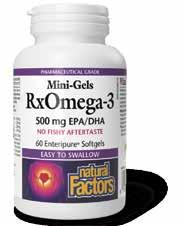
MEMORY
High-quality





Berberine







They are like very tiny powerplants that produce energy in every living cell in our bodies. On average, every cell has 1,500 mitochondria. Can you imagine that for their extremely small size, it’s been said that they produce, gram for gram, 10,000–50,000 times more energy than the sun?
To say that mitochondria are important to human health is grossly understating their role in our survival. We literally would not be alive without them. They convert our food into energy, so that every other function of our body can occur
as it needs to. As we age, our ability to create healthy mitochondria to support our energy demands diminishes. And because about 90% of our cellular energy is produced by mitochondria, this decline can cause significant health issues.

The RegenerLife™ formulas help ignite mitochondria to produce energy from the foods we eat. A great start is using convenient, all-in-one packets.





 BY KAREN JENSEN, ND
BY KAREN JENSEN, ND
Skin disease is a global public health problem that often has physiological, psychological, and social impacts. Acne and eczema, including atopic dermatitis (AD), the most common form of eczema, are among the most common chronic skin conditions that significantly impact the quality of life in people of all ages.
Acne vulgaris is a chronic inflammatory skin disease in which the sebaceous glands that lubricate the skin become clogged, causing a bacterial overgrowth of Propionibacterium acnes. People who experience acne most commonly develop blackheads, red and tender bumps or pimples on the face, neck, shoulders, chest, or upper arms.
AD is commonly referred to as eczema – a dry, scaly, itchy rash. The relentless itch causes sleep disturbances in about 60% of the cases, and insomnia can lead to fatigue, lethargy, lack of motivation, and depression. There is also a risk of secondary infections from endless scratching.






Several factors are involved in disrupting the skin microbiome, including stress, chemicals in skin products and the environment, overuse of hand sanitizers, UV radiation, pollution, and more. The skin is the largest organ in the body, and it is a first-line barrier for immune defence, and an essential link between the internal body and the outer environment. Most skin conditions are accompanied by an altered skin-gut microbiome balance, referred to as dysbiosis. Dysbiosis is associated with increased gut and skin barrier permeability, allowing foreign substances to enter the bloodstream and leading to the inflammation, rashes, and lesions involved in common skin disorders. The importance of the skin microbiome has gained significant attention in dermatology in recent years.
Psychological stress and other stressors, including environmental and lifestyle factors, affect skin inflammation. Acute stress causes the immune system to react by increasing inflammatory markers as an initial defence, but prolonged stress leads to chronic inflammation in the body and brain. Food allergens, such as cow’s milk, gluten products, eggs, and soy, are often the most significant stressors contributing to skin disorders. Plus, a diet high in junk food, reduced consumption of fruit and vegetables, and deficiency of omega fatty acids are also linked.
ZINC helps in connective tissue formation, maintains healthy skin, supports immune function, and reduces skin inflammation.
VITAMIN D regulates the immune system, protects the skin’s barrier function, and prevents inflammation common in most skin disorders.
OMEGA-3: Studies suggest that supplementation with 1.8 g of omega-3 daily has reduced scaling, itching, and overall severity of skin lesions.
PROBIOTICS: A recent metaanalysis found that treatment with a mixture of different probiotic bacterial species is an effective addition to the management of inflammatory skin disorders.
VITAMIN E is an antioxidant that works by limiting the formation of free radicals, thereby decreasing inflammation and injury to the skin. According to a four-month study, participants who received
400 IU of vitamin E daily experienced significant improvements in eczema severity and symptoms like itching compared with a control group.
BERBERINE HCL is effective in the treatment of insulin sensitivity and metabolic syndrome. Acne is common in people with insulin dysregulation, and studies have shown that when blood sugar is regulated, hormones are stabilized, and there are fewer acne breakouts.
ESTROSENSE® is very important for teens with hormonal acne.
TEA TREE OIL has antibacterial properties with the potential to kill P. acnes, the bacteria that causes acne. It also has anti-inflammatory properties that help reduce the swelling and redness of pimples. Follow directions when using tea tree oil.

APPLE CIDER VINEGAR (ACV) contains malic, citric, lactic, and succinic acids, all of which have been shown to kill acnecausing bacteria. Succinic acid has been shown to decrease inflammation; lactic acid can improve skin texture by exfoliating dead skin cells; and malic and other acids help balance the pH of the skin, which is normally acidic. This helps keep harmful bacteria in check.

COCONUT OIL contains lauric acid, which is known to have antimicrobial and anti-inflammatory effects, and it has been shown to protect the skin barrier. Adding vitamin E to coconut oil increases both their benefits.
In addition to the supplements and topical treatments mentioned, a healthy diet of fruits and vegetables, whole grains, good quality protein, and drinking 6−8 glasses of water per day can prevent and help manage most skin conditions.


Your brain cells demand more energy and nutritional support than any other cells in your body. This kit, with the ingredients listed below, helps naturally ignite brain mitochondria to produce energy from the foods we eat, in convenient all-in-one packets.

• Phosphatidylserine helps nerve cells communicate. It improves memory function and the ability to focus.
• Grapeseed extract and curcumin regulate and reduce inflammation and cognitive decline.
• Probiotics improve the health of your “second brain,” the gut, which can boost neurotransmitter production. These neurotransmitters boost mood and cognitive function.
• Omega-3 helps fight inflammation and maintain brain structure.
For people who want to maximize their omega-3, you’ll love our new 2200 mg omega-3, which offers ultra-strength omega-3 combined with vitamin D3. These superior softgels deliver concentrated omega-3s to your intestines for advanced absorption.

Breakthrough technology delivers rejuvenation with Liposomal Bioenergetic Vitamin C liquid softgel. This is the powerhouse of antioxidants! It helps with healthy aging.



The brilliant Sleep Better tri-layer tablets have 5 mg of quick-release melatonin and 5 mg of delayed, timed-release melatonin, so you can stay asleep. Plus it has 5-HTP to get you asleep more quickly, along with ingredients that help calm you for a restful sleep (L-theanine, valerian, passionflower, and hops). No more waking up in the middle of the night!

Resveratrol is found naturally in “superfoods” like red wine, cocoa, and blueberries. It’s a powerful antioxidant that regenerates the body at the cellular level. Because of its anti-inflammatory activity, resveratrol has been shown to offer brain and cardiovascular protection, and can protect nerve cells from damage.
Pursuing a weight loss goal requires behavioural changes to increase drive and motivation. Motivation is triggered and controlled by brain chemicals called neurotransmitters, which have essential roles in our body as they a ect our physiological states, such as wakefulness, alertness, and calmness; regulate sleep, mood, motivation, memory, focus, energy, and libido; and control body weight. One neurotransmitter, dopamine, may present the most crucial brain chemical for weight loss. It is released at high levels during rewarding activities (e.g., accomplishments, exercise, food consumption/cravings, addictive substance consumption like sugar or drugs), and can be both stimulating


 BY JULIA SOLNIER, P h D
BY JULIA SOLNIER, P h D

Studies have shown that losing as little as 5% of body weight can lead to significant metabolic health improvements, such as insulin sensitivity and blood lipids (e.g., cholesterol).
(have excitatory e ects) or calming (have inhibitory e ects) to the brain. Factors such as stress, lack of sleep, or poor diet can deplete levels of








neurotransmitters and o en result in weight gain.






Also, hormones can a ect body weight as they regulate neurotransmitter release from the brain. Hormones are chemical messengers circulating in the body and are involved in nearly every bodily process, including metabolism, hunger, and fullness. Because of their association with appetite and an unhealthy lifestyle, including diets rich in ultra-processed food, added sugar, and re ned carbohydrates, they can lead to hormonal dysregulation (such as insulin resistance and increased leptin levels), and thus, an increase in weight. Insulin, leptin, and the ghrelin hormones (appetite-regulating hormones), can balance food intake

No matter what your weight loss goals are, it sometimes seems impossible to lose weight because of several physiological and psychological reasons.
When most people think of weight loss, they rarely think of the brain as a critical element. It turns out, however, that the brain and its chemicals play a signi cant role in body composition and weight management.
and energy expenditure. Studies have found that the circulating levels of these hormones are associated with body fat content and are crucial for weight regulation.
For this reason, the secret behind e ective long-term weight loss is to keep hormones in balance and gain control of how we handle our emotions. Emotional eating or eating when we’re not hungry is o en associated with imbalances in hormones and neurotransmitters (e.g., a spike in cortisol or a lack of GABA for a calming e ect), which can signi cantly sabotage weight loss e orts. When we experience negative emotions, such as being stressed out (cortisol high), feeling overly worried or anxious (GABA low), or facing a complex problem, we are more likely to turn to food for comfort instead of dealing with the painful situation. Sometimes the
strongest food cravings hit when we are at our weakest point emotionally, leading to overeating – especially high-calorie, sweet, and fatty food.
e good news is, we can take steps to regain control of our emotional eating habits. is includes tracking food intake to reveal a connection between mood and food; managing stress through yoga, or deep breathing techniques to decrease cortisol levels; staying hydrated and getting enough electrolytes to prevent food cravings and snacking; getting emotional support through family, friends, or joining a group (e.g., weight loss groups online) to stay motivated and increase dopamine; getting distractions such as by taking a walk, listening to music, reading, or calling a friend to ght boredom and thus prevent snacking. Positive self-talk, giving yourself credit for changing your
Here are a few daily practices that may help you lose weight and keep it o . Research shows that making only a few small changes to daily habits can be an easy and e ective way to increase weight loss:
Starting the day with a high-protein breakfast can promote weight loss by reducing cravings, appetite, and ghrelin secretion throughout the day. Ghrelin, the so-called “hunger hormone,” plays an essential role in weight management as it can stimulate and increase appetite, and thus makes it harder to lose weight. Ghrelin is produced in the stomach and secreted when the stomach is empty. As it enters the bloodstream and travels to the brain, it tells the brain to become hungry and increase its food intake.
RealEasy™ Meal Replacement with PGX® represents an ideal, healthy alternative source of food lled with optimal amounts of macro- and micronutrients, and is high in protein. Research-rich, patented PGX is a super bre available in natural health stores. When taken with meals, PGX slows digestion to promote healthy blood sugar levels and curb cravings. Users report successful weight loss and improved health when taking PGX before meals.
Increasing water intake can be bene cial for weight loss and energy expenditure. Start the morning with one or two glasses of water, and stay hydrated throughout the day.
eating habits, recognizing progress, and creating a plan to avoid episodes of emotional eating in the future can increase dopamine levels and help you stay motivated and focused on your ultimate weight loss goal. Especially when weight loss seems slow or even stagnating, it is vital to acknowledge the progress and improvements made so far, such as in mobility, energy levels, and other aspects of health. Setting realistic goals at the beginning of your weight loss journey is just as important. Studies have shown that losing as little as 5% of body weight can lead to signi cant metabolic health
Spending more time outside can in uence weight, as vitamin D obtained through sunlight may help increase weight loss and prevent weight gain.
Physical activity first thing in the morning may be associated with increased satiety and improved blood sugar control, and can help boost weight loss.

Meal planning and home-cooked wholefood meals are essential parts of weight management. Both are associated with a higher quality diet and a lower risk of obesity, increasing life expectancy.
Tracking food intake by using a food diary (or online app) can be helpful for weight loss.





Eating satisfying amounts of healthier food and snacking healthy is another weight loss strategy. Choose nutritious snacks, such as fresh fruit, vegetables with hummus dip, or nuts. Also, try low-calorie versions of your favourite foods.
Avoid temptation by lling your home with healthy snacks instead of ultra-processed, high-sugar, and highcalorie treats. Buy a weekly treat outside of the home.
•
•
•


Instead of trying to achieve a specific weight goal, aim to be as healthy as possible. Being more intentional about what we put in our bodies so we can enjoy life more abundantly can help alter our way of thinking long term.
Besides following a balanced diet, getting enough sleep, staying active, and managing emotions such as stress (keeping cortisol levels low), another critical element is to change your mindset. For example, one study has highlighted the importance of viewing food and exercise as components of holistic health, which means we need to shi our focus. Instead of trying to achieve a speci c weight goal, aim to be as healthy as possible. Being more intentional about what we put in our bodies so we can enjoy life more abundantly can help alter our way of thinking long term. Also, keeping hormones and neurotransmitters at healthy levels is essential to weight loss success. Certain supplements, such as the WomenSense® line, are formulated to support hormone and brain health, and can therefore provide valuable weight loss tools:
HappySense® with 5-HTP naturally enhances serotonin (the happiness and peace hormone), which improves mood, reduces cravings, and increases energy. Healthy levels of serotonin help us deal with stressors, leaving a feeling of relaxation and calm. It may therefore prevent episodes of emotional or stress eating.
AdrenaSense® is a natural formula containing rhodiola, suma, Siberian ginseng, schisandra, and ashwagandha. Ashwagandha regulates the adrenal glands and cortisol levels, leading to stress relief, and may thus help regulate weight loss.


ThyroSense® is a proven natural combination of important nutrients, including L-tyrosine, ashwagandha, guggul, pantothenic acid, copper, manganese, and iodine, which can help enhance thyroid function. Regulating thyroid hormone levels is essential for weight loss. Several studies have suggested that thyroid hormone treatment can help produce more weight loss than can be achieved by dieting alone. L-tyrosine is an amino acid and essential component for the production of several important neurotransmitters, such as dopamine. It can speed up your metabolism and may thereby support weight loss.

EstroSense® is a complete, natural formula that can help promote healthy estrogen metabolism. Both high and low levels of the sex hormone estrogen can a ect weight.
In closing, be kind to yourself and stay the course. Every small daily step will take you closer to your health and wellness goals. e path to health, tness, and wellness is a lifestyle, and it requires a marathon, not a sprint.

What if I told you there was a simple, zero-cost, and proven e ective way to delay aging? It’s true. There is a powerful age-defying tool lurking in your quads, glutes, and biceps: muscle building.
Muscle loss is a hallmark of aging that is rarely discussed. Technically called sarcopenia, dwindling muscle begins in our thirties. Diminished muscle mass a ects not just physical abilities, but also mood, immune system function, and even our lifespan. Regular muscle-building exercises will improve immunity, calm anxiety, ght depression, boost metabolism, build bone density, and help you recover from illness sooner and live longer.

A regular scale and BMI won’t tell you how much of your body weight is muscle. Your doctor’s o ce or local tness centre might have bioelectrical impedance, DEXA, or other technology that can pinpoint body composition. While less accurate, at-home body fat scales can give you an idea of your lean body mass. Easier still, if you are over 25 and not physically active, you can safely assume your muscle mass could be better.
e best news may be that you don’t need to bulk up or spend hours pumping iron to build muscle. Mounting evidence shows that “exercise snacks” –brief bouts of strength-training activities – make a meaningful di erence in muscularity. For people just starting, ve minutes twice daily of strengthbuilding movement is as good as hitting the gym. Clinical trials o en use only body weight and no special tness equipment to investigate and show the bene ts of exercise.


ere’s a little more to maintaining muscle than pumping iron or exercising. You must supply your nascent brawn with the raw materials to create a new mass. Resistance training causes microscopic tears in muscle tissue. Muscle building occurs when those tiny tears repair in the days following your workout. e body creates enough new tissue to heal the healthy damage and a little extra for good measure. e net gain of the new muscle depends on optimal protein intake. Plan meals and snacks to achieve at least 1 g of protein per kg of body weight or roughly ½ g per lb of body weight. For example, a 150-lb person would need about 75 g of protein daily to prevent muscle loss. For bonus points, timing your exercise snacks shortly before your actual workout will stimulate muscle growth more e ciently, as exercise and protein intake are synergistic.
5 minutes, twice daily
Do as many repetitions as you can in the time allowed. Use a chair for balance if needed. Gradually incorporate handheld weights, resistance bands, or other equipment over time to keep each interval challenging.
Squats 60 seconds
Standing calf raises 60 seconds









Push-ups 60 seconds
Plank 60 seconds (or work your way up to it)



Stair climbing 60 seconds
Don’t have stairs? Try jogging on the spot, skipping rope, or even old-school jumping jacks. Building muscle mass will improve your health and ability to enjoy the activities you love. Start today!



On a recent trip to Italy with my family of ve in tow, it amazed my husband and me how active and healthy older Italians seemed. Many in their 80s live alone, shop in open-air markets, and easily carry their groceries home, walking up large, stone stairs. I started thinking about the “Blue Zones.” Very few places in the world are called Blue Zones, and for good reason. A diet in the Blue Zones comprises vegetables, fruits, grains, and legumes, and is void of large portions of meat, sugar, and processed foods, which is an extreme departure from the typical North American diet. People in these zones consume co ee, black or green tea, and wine daily. It was important to me as a nutritionist to explore how minor changes to diet and activity could have substantial health bene ts.
If you are unfamiliar with the concept of the Blue Zones, there are ve locations worldwide where people live long, healthy, and happy lives. Discovered in 2004, the Blue Zones include Sardinia, Italy; Ikaria, Greece; Nicoya Peninsula, Costa Rica; Seventh Day Adventists in Loma Linda, California; and Okinawa, Japan. A team of medical researchers, anthropologists, and epidemiologists went to these regions and performed a large-scale study with National









There are five Blue Zones locations worldwide where people live long, healthy, and happy lives.
Geographic on longevity. ese scientists searched for evidence-based commonalities among the people’s diets and lifestyles. Researchers found many exciting similarities in all ve zones, and the good news is that you don’t need to move there to reap the bene ts of a long, disease-free life. Small, easyto-incorporate daily changes can extend your life by 10–12 years.
As a nutritionist, food is my passion. I love to eat, cook, and share meals with family and friends, so I was particularly interested in learning more about the Blue Zones diet.

e diet comprises 85% fresh vegetables, fruits, grains, and legumes, and meat is eaten a few times per month, each serving the size of a deck of cards. People in the Blue



Zones also stop eating when they’re 80% full and don’t like the feeling of being stu ed, which is not a practice of North Americans, given our enormous serving sizes. e timing of meals also plays a crucial role. People in these zones enjoy a small meal in the late a ernoon or early evening, and that’s it. ey eat nothing else for the rest of the day. is form of intermittent fasting lengthens lifespan by reducing in ammation and undue stress on the digestive system. Another noteworthy point is that people enjoy 1–2 glasses of wine daily with good company to promote relaxation and help reduce stress. Another cornerstone in these zones is that people are connected to the community and have a sense of belonging. Family is always put rst. Aging parents and grandparents stay close, o en in the same home, which helps lower disease and mortality not just for the elderly, but for the children, too. Blue Zones families invest time and love in their children, resulting in the entire family caring for elderly relatives. Staying connected with friends and setting time aside for shared activities is integral to healthy aging.




Staying positive reduces stress. Stress is a leading cause of chronic in ammation, contributing to all major age-related diseases. People in the Blue Zones know how to relax and reduce stress. Feeling overwhelmed is inevitable, but taking time each day to regroup is another factor in longevity. Okinawans in Japan take a few minutes daily to remember their ancestors, Ikarians take an a ernoon nap, and the



Italians connect with family and friends over happy hour. No matter what, choose to relax, unplug, and re ect on all your blessings daily. Experiencing purpose in your life contributes to life satisfaction and longevity. A positive outlook and meaningful existence can add as many as 7–10 years of extra life.



While on our trip, we drew much inspiration from the elderly Italians. We enjoyed fresh and delicious vegetable dishes, connected with friends, walked everywhere, and sampled dinners in the beautiful setting of Italian sunshine accompanied by a glass of vino. We learned rsthand why Italians live longer, happier lives than many of their counterparts worldwide. Now home, we are re-inspired to continue incorporating everything we experienced on vacation. We’re eating meals together, mindful of the 80% rule, and enjoying the summer garden bounty while making beautiful memories with family and friends.

Experiencing purpose in your life contributes to life satisfaction and longevity.Loma Linda California Nicoya Costa Rica Sardinia Italy Icaria Greece Okinawa Japan
The body has a metabolic pathway that, if fed the right food and supplements, switches from the fat-storing mode to the fat-burning mode, providing many health benefits. The central “switch” is the AMPK (AMP-activated protein kinase) pathway, which regulates how energy is created and used. AMPK responds to changes in energy metabolism and boosts the capacity of cells to generate the vital energy molecule ATP, which improves mitochondrial function and normalizes lipids, glucose regulation, and insulin sensitivity.
AMPK has become a significant focus of research in recent years, and several drugs and natural supplements, such as metformin and berberine, have proven to be effective AMPK activators. More recently, studies have shown that apple cider vinegar (ACV) may also activate AMPK. In a recent study, obese subjects ingesting 15–30 mL of ACV each day achieved statistically significant weight loss compared to ones receiving placebo vinegar. In addition, ACV may improve glycemic control in people with diabetes, lower the postprandial glucose response, and decrease blood pressure. ACV was the mechanism that activated the AMPK pathway.
Improve circulation
Increase fat burning
Reduce inflammation and oxidative stress
Protect the cardiovascular system
Improve glucose metabolism
Suppress metabolic syndrome and diabetes Produce antihypertensive effects
Help digestive and liver function
Reduce the risk of dementia Control autoimmunity
VIscous dietary fibre from legumes, oats, apples, and psyllium seed husks
The Mediterranean diet – in particular, olive oil and the omega-3 fatty acids from fish oil
Reduction of calorie intake
Berberine – anti-obesity effects based on activating AMPK to increase brown fat activity; brown fat is a heat-generating type of fat that burns energy
Exercise
Cayenne pepper activates the AMPK pathway, which improves glycemic control to help prevent obesity and diabetes
Resveratrol improves mitochondrial activity and energy production by activating the AMPK pathways
ACV helps activate AMPK, which flips the switch in the body from fat storage to fat burning
There are many benefits to flipping the switch with AMPK to move from fat storage to fat burning.
Because the molecular composition of quercetin affects its ability to enter the bloodstream, then your cells.
This may sound complicated; however, after two years of development and human clinical studies in Canada, Quercetin LipoMicel Matrix was developed.
LipoMicel is the ideal carrier to deliver quercetin to your cells. shows up to 10 times higher absorption.


Compared to other quercetin products, only LipoMicel Quercetin has shown to provide the highest absorption of quercetin in clinical trials conducted in Canada. naturalfactors.com Available

To ward off infectious diseases, including cases of COVID-19, we are often told to eat right, exercise regularly – and come from a lucky gene pool! Well, one more thing we can do for ourselves is getting regular, restorative sleep.
CNBC reports that
million adults in the U.S.
Americans experience some sleep disorder. get fewer than the recommended seven hours of sleep per night.
None of this is good for maintaining a healthy immune system, and here’s why. Sleep problems and lack of sleep create inflammation in the body, which is linked to obesity and depression, as well as increased rates of hypertension, heart disease, diabetes, and cancer.
CNBC columnist Dr. Heather Moday suggests creating an environment conducive to sleep to improve your nightly ritual. This includes blocking out light (even indicator lights on bedroom electronics), quieting outside noise with a white-noise generator, and keeping the room at about 65 ˚F (18.3 ˚C). Then prepare for sleep each night by setting aside digital devices and journalling or doing breathing exercises to calm the mind. Adding some easy stretches further aids relaxation and engages your parasympathetic nervous system. If you’re not already supplementing with magnesium, try taking some before bed for its sleep-enhancing properties, or get it through the skin in a warm Epsom salt bath. Try wearing blue-light-blocking glasses to ensure your body is making the necessary melatonin to prepare you for sleep. These yellow or amber lenses block the blue part of the light spectrum in artificial light and digital devices, preventing your brain from thinking, “it’s daytime, time to be awake!”
That is, something other than wanting better sleep, a healthier heart, and a new way to fight stress and improve mood. From our friends at DoctorMurray.com, we learn that magnesium also BOOSTS ENERGY LEVELS, especially for the vast majority of us who aren’t getting enough magnesium from our diets.
This link to improved energy could be excellent news for people who experience chronic fatigue or even more general feelings of sluggishness. People whose work or exercise routine includes significant perspiration should also consider magnesium supplementation because sweating quickly depletes our already-low magnesium supplies.
As Dr. Murray recommends, start by trying 300 mg at bedtime for a month and see how you feel. Taking magnesium before bed will not keep you up, in fact, it will help you sleep. And over time, you will reap the benefits of more energy throughout the day. While the mineral comes in various forms, such as magnesium citrate or bisglycinate, most digestive systems will tolerate both.
Natural Factors offers magnesium bisglycinate in convenient 200 mg vegetarian capsules and powder, or magnesium citrate in a delicious, sugarfree berry powder. Both delivery systems provide the recommended energy-enhancing mineral.
Looking for a new reason to consider supplementing with magnesium?
There’s a new lipo in town. Liposomal is a term you have probably been hearing in the nutrition space. Also called microencapsulation, the term refers to a nutrient delivery system that can enhance the absorption of vitamins, minerals, amino acids, and more.
Liposomes and their little sisters, called micelles, are tiny spheres that envelope nutrients for boosted bioavailability. Initially developed in the pharmaceutical industry to improve the uptake of hard-to-absorb medicines, the usefulness of liposome and micelle technology quickly became apparent, expanding far beyond the realm of chemotherapy.
Despite the hi-tech vibe, liposomes and micelles are naturally occurring. If you have ever taken the time to slowly whisk oil into vinegar to create a silky vinaigrette, you have created liposomes and micelles in your own kitchen. This is thanks to the natural tendency of many fat- and water-soluble substances to form teensy droplets when smashed together. It’s not only pharmaceuticals that utilize this technology nowadays, but supplements also benefit from the enhanced absorption capabilities. Doing this in the presence of vitamin C or glutathione creates
microscopic packages that protect the precious contents from being broken down before absorption. Research suggests that microencapsulated nutrients are delivered more efficiently to cells. Some nutrients are best absorbed in double-layer liposomes while others have better bioavailability in single-layered micelles.






Recent advancements in nutritional liposomes and micelles are behind the brand-new buzz around them. When first introduced to the market, early liposomal supplements came only in unpalatable liquid shots. Keep looking, and you’ll find that liposomal vitamin C, micellar glutathione and quercetin, and other nutrients are now available in softgel capsules to avoid the slippery slurp. A word to the wise, sometimes the term nanotechnology is used in conjunction with liposomes and micelles, which causes concern about small particles that could get into places in the body that they shouldn’t. Rest assured that true nanotechnology is relevant only to pharma applications. Liposomes and micelles used for nutrition and supplements don’t meet the technical definition and infinitesimal size to be potentially problematic.
Liposomes and micelles should be on your radar whether you have impaired nutrient absorption or simply want to take advantage of superior, advanced nutrition technology.

Constipation is one of the most common gastrointestinal complaints resulting in 2.5 million doctor visits annually. Certain medications, lifestyle choices, and deficiencies in our diet can affect our bowel health, but luckily there are some easy steps we can take to eliminate constipation.

Not only do they taste great, but these fibre-rich fruits also feed our gut with friendly bacteria and produce a shortchain fatty acid called butyric acid, which supports a healthy colon.
Try bite-sized prunes as they are juicy and delicious. Prunes also help you feel full, increase energy, support cardiovascular health, and help reduce blood pressure.
Consuming dietary fibre found in fruits, vegetables, whole grains, and legumes is one of the best ways to relieve constipation.
Some fibre-rich foods include fruits such as berries, oranges, pears, apples, and tangerines. Vegetables include carrots, squash, yams, leafy greens, and broccoli, and some legumes are beans and lentils. Nuts and seeds are also excellent sources of fibre. Try almonds, walnuts, chia, hemp, flax, and sunflower seeds.

A common reason for constipation is low bowel motility. Motility is when our nerves stimulate our small and large intestines to assist our body’s rhythm in moving things along in the digestion process and, later, the elimination process. To relax your bowels and assist your body with bowel movements, the following dietary supplements are helpful additions to a balanced diet:
■ PROBIOTICS support our gut’s microbiome and regulate inflammation, immune function, and digestion.

■ PGX® is a fibre supplement made from konjac root, xanthan gum, and sodium alginate. It is a popular option for our fibre intake.
■ VITAMIN C (also known as ascorbic acid) is a vital nutrient that, in a pinch, can help loosen stool. Eating fruits rich in vitamin C or taking a high-potency supplement will help relieve constipation.
■ MAGNESIUM oxide or citrate can act as a laxative in the colon and draw water into the intestinal tract, softening the stool and promoting a smooth bowel movement.
Another reason that constipation can occur is low physical activity. Moving your body is another way to help speed up the digestion process, as it increases the activity in your intestines. You don’t need to start a complex workout routine to speed up your digestion process, but incorporating more walking into your day can work wonders on bowel health.

Another culprit of constipation is dehydration. When our intestines are too dry, the bile can’t move as efficiently through our system. Drinking adequate water, fruit juice, or other hydrating liquids will significantly support a more regular, fluid bowel movement. Remember, drinking coffee and alcohol can dehydrate you, so drink plenty of water.

I hope my patient recommendations help set your body up for success in its natural rhythms of digestion and elimination, and bring more ease to your life.

Let’s look at some of my most successful recommendations supporting proper elimination.
JULIA SOLNIER, PhD, reports on the results of the latest completed study using RealEasy™ with PGX® Meal Replacement, where participants took part in a 12-week weight-loss program. Participants could choose to use either a whey or vegan protein-based meal replacement. All participants who completed the 12-week program achieved excellent results with an AVERAGE WEIGHT LOSS OF 7%.

One critical aspect for successful weight loss is to maintain satiety while following a low-calorie diet. In this study, 98% of participants reported a greater feeling of satiety, including reduced appetite/hunger and food cravings, after


drinking RealEasy shakes. Besides that, 81% of study participants observed positive effects on their gut health, such as improved digestion and stool frequency; with more than 85% of participants reporting positive side effects on sleep quality and duration, mental health, including higher energy levels, and improved skin health. When study participants were asked for their experiences with RealEasy, they described the meal replacements as an easy solution to lose weight and maintain the weight loss, and as a convenient program to continue. Having two meals per day of RealEasy with PGX can provide satiety, control hunger, while replacing unhealthy, heavy, carb-laden foods. Various ideas and tips have been shared as to how to customize the shakes and give them an extra special flavour. Among the favourite ingredients, which were added for variety, are fruits such as berries or bananas, as well as coffee.


The RealEasy meal replacements are filled with optimal amounts of macro- and micronutrients, and provide a high-quality protein source, such as whey concentrate and isolate. Whey protein is quickly absorbed by the body and contains a higher range of the branched-chain amino acids (BCAAs) leucine, isoleucine, and valine, which are particularly helpful for weight loss without losing muscle mass.
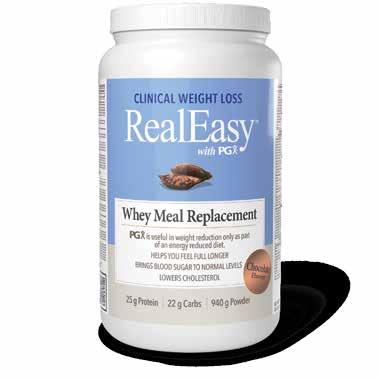

Whey protein, especially whey isolate, offers significant benefits even for individuals with lactose intolerance or lactose sensitivity. Another main component in the RealEasy shakes is PGX. PGX is not only a promising candidate for weight management/loss, but also for reducing obesityassociated risk factors, such as diabetes and high cholesterol, as shown in many studies.

Study participants, who tried many different (unsuccessful) diets over the years, called the RealEasy program a transition from “Diet” to “Life” resulting in a big change of eating habits.
“Shouting it out” might be a great approach to quell laundry stains, but not stormy moments in personal relationships!
When you’re angry, you and your spouse are both upset. Don’t make it worse by shouting. Don’t even talk.
Women’s Voice has reported on plastics on the high seas for years – from oating plastic packaging waste to plastic nanoparticles suspended in salt water and settling onto beaches. Now we’re writing about a new threat from plastics in our waters. e latest? Plastitar. Plastitar is formed when oil spill residue combines with plastic pollution to create a hardened tar speckled with colourful bits of plastic otsam. Sadly, this is not an isolated observation. Researchers have found plastitar over long stretches of beach, especially along shipping lanes frequented by oil tankers, container ships, and shing eets.
According to therapist Terry Real, your rst move should be to create a cooling-o period. en, check in: are you both calm enough a er that break to engage with the disagreement? Only when both of you can say yes should you take the following steps, as Real related in a recent issue of Goop’s newsletter. Describe what happened and how it a ected you.
While it’s always best to avoid attributing motive to your loved one, therapist Real says it’s okay to share with your spouse what you told yourself about what happened and why. When you begin the make-up
period, sharing how you felt is okay. Maybe you assumed your spouse was being sel sh, oblivious, or whatever. It doesn’t mean they were; remember that’s what you told yourself.
Next, describe the feelings you had or are having. Real suggests sticking with primary emotions such as pain, anger, fear, shame, or guilt.
en, suggest a remedy – forgive and move on, promise to do things di erently in the future, or do whatever would make you both feel better about what happened.
Life is too short to live with anger and resentment. Let it go and grow.
e term “plastitar” was coined by an analytical chemist in the Canary Islands, Javier Hernandez Borges, who told e Guardian that oil “acts like Play-Doh” when it washes ashore, allowing the plastics to congregate and embed themselves in the so material. Over time, plastitar hardens, becoming a menace to the ocean and its inhabitants.
Plastitar is not the rst instance of plastics in our oceans creating new and worrisome formations. Before plastitar, scientists had already noted the rise of pyroplastics, which look like rocks but aren’t, and plastiglomerates, created by melted plastic, beach sediment, and fragments of basalt lava.
ese forms of plastic pollution are more than just ugly. Borges says the fear now is that plastic pollution has

become pervasive enough that it’s taking on a life of its own in various ways, leaking toxic chemicals and interfering with nature itself. By killing organisms or preventing them from growing and reproducing, he says plastitar and similar o spring of oceanic pollution may be “blocking and inhibiting the development of the ecosystem.”
WV is pleading with our readers to reduce or stop buying single-use plastics. How much worse does the pollution in our ocean need to get before we all wake up and realize we CAN live without single-use plastics?
Adding herbs and spices to your meals isn’t just a tasty treat, advises author and nutrition consultant Edie Horstman. Writing on the wellness website Camille Styles, Horstman touts the health benefits of adding the good stuff to meals instead of just subtracting the not-so-good stuff. What’s her idea of the good stuff? Herbs from leafy plants and spices from roots, bark, or other parts of growing things, which have been used for centuries to heal the body from within.

Our forebears didn’t know for sure which herbs or spices helped the body, and they couldn’t have known the science of how. But today, research proves herbs and spices can balance our blood sugar, assist with weight loss, improve heart health, and support the immune system.

• CINNAMON AND TURMERIC, eaten with satiating foods, act to moderate blood sugar
• CAYENNE PEPPER, CUMIN, AND GINGER can add thermogenic, fat-burning power to your healthy weight loss efforts

• BLACK PEPPER, GARLIC POWDER, CURRY, AND CORIANDER can be used to flavour your food instead of salt, and will help keep your blood pressure down
• Potent and antioxidant-containing herbs and spices, including TURMERIC, GINGER, SAGE, PEPPERMINT, AND CLOVE, fight inflammation and bolster your immune system
Are you wondering how to get started on spicing up your life? Horstman suggests these substitutions. Instead of sugar in your oatmeal,
try cinnamon and nutmeg. Skip the soy sauce in your stir-fry and use equal parts of ginger, garlic, red pepper flakes – and maybe some coconut aminos! And when it’s Taco Tuesday, don’t reach for a packet of taco seasoning from the store – make your own with chilli powder, cumin, and paprika. And if a sensitive tummy makes it challenging to spice up your food, taking cinnamon, turmeric, ginger, peppermint, and other herbs in supplement form is equally beneficial!





Recent articles in e Journal of the American Medical Association (JAMA) have established a link between infertility and increased human exposure to a widely used pesticide – glyphosate, sold as Roundup®. Roundup has been implicated in children’s health issues and the development of certain cancers for quite a few years. But now we have the best data yet to connect it with di culties getting pregnant.




According to epidemiologist and pediatrician Phillip Landrigan’s notes in JAMA, “multiple lines of evidence suggest that human fertility is on the decline and that the frequency of reproductive impairment is increasing.” He’s referring to reduced sperm counts, increased congenital disabilities, and rising rates of testicular cancer that are “almost certainly” linked to chemical exposure. Landrigan points an accusing nger at elected o cials and policymakers who write o pesticide exposure as merely an environmental issue. “In fact,” he says, “these potent chemicals can have powerful e ects on human health that need to be intelligently confronted.”


What’s needed? Better research and regulation, say the scientists. Researchers in the Journal of Epidemiology and Community Health (JECH) declare that “current safety standards are outdated.” And that’s in no small way related to the fact that standards are based on evidence provided by glyphosate manufacturer Monsanto, which has manipulated the data for nearly a generation. Public concern over pesticide use has risen, but there hasn’t been a corresponding response from the government. Researchers urge politicians to stand up to the pesticide lobby to strengthen pre-market testing, post-marketing surveillance, and warning labels. We have a tracking system in place for pharmaceutical drugs, so why not pesticides that also act upon the health and functions of our bodies? Such legislation should require the documentation of human exposures and the development of better hazard assessments to track vulnerable populations such as agricultural and landscape workers.

There’s a to-do list for the rest of us, too –whether we’re trying to have children or are raising them.





Eat more organic food to avoid or reduce pesticide use and exposure.




Insist that governments impose or enhance common-sense regulations on the pesticide industry.








Stop buying chemicals to remove weeds from your driveway. Spraying vinegar and dish soap will kill weeds, making the process safer for the planet.

Human fertility is on the decline and ...the frequency of reproductive impairment is increasing.







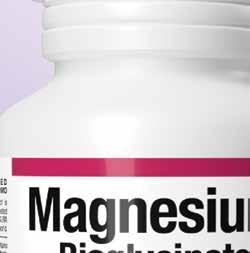



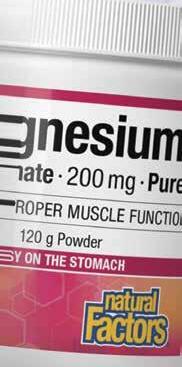































































There was a time when doctors and scientists alike believed that fat was just fat, a tissue that cushioned our body, provided warmth, and helped store energy. But things have evolved since then, and in the last 20 years, more has been discovered about our fat or adipose tissue. Our adipose tissue is actually an incredible endocrine (hormonereleasing) organ, performing integral functions throughout the entire body.
Carrying much of this responsibility is a hormone named adiponectin. Adiponectin is secreted by our adipose tissue, and healthy levels have been reported to be negatively correlated with cancer, cardiovascular disease, and diabetes. A major way it protects our body from these common chronic diseases is by exerting protective effects against silent inflammation. Also known as a disease of the affluent, silent inflammation interferes with the body’s healthy tissues, and, unfortunately, is an inflammation you can’t feel. Here are three tips to help you determine the amount of silent inflammation you may have and what to do about it.
PROTEIN (CRP). CRP is a marker for circulating silent inflammation. It is a simple blood test that will help you understand the degree of silent inflammation you may have in your body and how aggressive you should be to get your inflammation down.
LOSE THOSE EXTRA 5 OR 50+ LB. Being overweight or obese is hazardous to your health in part because the more overweight you are, the less adiponectin your adipose can secrete, putting you at greater risk for silent inflammation. Diets low in refined carbohydrates, the Mediterranean diet, and consuming food higher in omega-3 and lower in omega-6 have been beneficial for weight loss and lowered inflammation in the body. Losing just 5% of body weight has major health implications, and clinically proven meal replacements such as RealEasy™ with PGX® have also been shown to support metabolic parameters in the body.
SPICE UP YOUR LIFE. From tree bark to spices, nature has created many options to combat silent inflammation. Extracts, including pycnogenol from pine tree bark and curcumin from turmeric, are wellknown anti-inflammatory and antioxidant nutrients that promote healthy cytokine signalling throughout the body and even in the brain. Early research suggests they can also help improve circulating adiponectin levels, acting as crucial warriors in the battle with silent inflammation.
Silent inflammation is truly dangerous. Understanding what you may be facing is the first step, followed by supporting your body’s ability to fight it. But as the well-known proverb says, an ounce of prevention is worth a pound of cure. So, adapting nutritional measures to minimize silent inflammation before it even starts to smoulder can help stave off chronic disease.

is the ultimate multi-collagen blend for radiant skin and flexible joints! Combines five types of hydrolyzed collagen and NEM®; enjoy by adding to shakes, smoothies, or blending into your coffee.

is an active form and source of vitamin B3, which supports NAD+, a critical coenzyme, to boost cellular energy and slow down the aging process.


THE PRODUCTS FEATURED IN THIS SECTION ARE TRUSTED CHOICES AVAILABLE EXCLUSIVELY IN NATURAL HEALTH FOOD STORES.
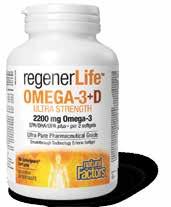
NEW! Omega-3+D Ultra Strength supports heart, brain, and immune health. Each softgel contains Ultra-Pure pharmaceutical-grade fish oil providing EPA, DHA, and DPA plus 1000 IU of vitamin D3.


A complete daily kit with vital nutrients to support mitochondria function, reduce fatigue, and improve cardiovascular health.

is a relaxing nighttime drink to promote relaxation and an uninterrupted, restful night’s sleep. Featuring 100%, magnesium bisglycinate blended with melatonin, L-theanine, and Pharma GABA®.

Factors Farms® are certified 100% organic. Our crops are fertilized with compost and nitrogenrich sea plants, and are meticulously cared for by hand. This is the vision that created the greatest multivitamins ever.











Nutrition and health go hand in hand. The idea that healthy eating is needed for optimal health is not new. Since the time Hippocrates discussed that food could be our medicine, research has revealed that diet plays a far more significant role in health than we may fully realize, especially as it relates to NONCOMMUNICABLE DISEASES (NCDs).
Healthy eating is a foundational element of health, but what does it mean to follow a healthy diet? Dietary patterns low in fresh fruit and vegetables and high in processed meats, refined grains, salt, and sugars are often to blame for higher incidences of chronic conditions. But diet is a modifiable risk factor, meaning we can make
nutritional changes to help prevent disease. Health-promoting diets, such as the Mediterranean, MIND, and DASH diets, have been investigated for their role in reducing the risk of NCDs. For example, closely following a Mediterranean diet has been associated with greater longevity and lowered risk of diabetes, cardiovascular disease, and cancer.
Start by harnessing the power of your daily nutrition with these research-backed approaches to reduce your disease risk and promote health.

NCDs are also known as CHRONIC DISEASES, these health concerns have been recognized as some of the leading causes of death and disability worldwide. Yet, researchers have found that a healthy diet is one of the strongest protective factors to impact the risk of NCDs, including DEMENTIA, DIABETES, CORONARY HEART DISEASE, STROKE, and CANCER.

Are you interested in preventing chronic disease?
Nutrition experts often advise us to “eat a rainbow.” This nutrition tip refers to consuming a variety of fruit and vegetables of different colours – red apples, orange peppers, purple grapes – the options are plentiful! Fruit and vegetables are high in nutrients required for optimum health such as vitamins, minerals, fibre, and phytochemicals. Research has shown that polyphenols, a phytochemical found in

fruit, vegetables, cocoa, tea, and coffee, protect against the development of some chronic diseases, including obesity, neurodegenerative diseases, type 2 diabetes, and cardiovascular diseases. Gain the antiinflammatory and antioxidant benefits of these foods by including them in your meals and snacks, such as in smoothies, oatmeal, salads, and stews, or enjoy them on their own.

Hippocrates once said, “all disease begins in the gut.” Growing evidence is showing that disruptions in the gut microbiota and gut barrier can contribute to gastrointestinal and metabolic conditions plus neurological, cardiovascular, and respiratory diseases. The typical Western diet can disrupt the
Adequate protein intake is essential throughout life. When we consider the types of protein that are best for reducing disease risk, consuming fewer animal-based proteins and more plant-based proteins are preferred. For example, the MIND diet, developed for brain health and dementia prevention, highlights increased plant-based food intake while limiting animal-based food. This dietary
balance and diversity of our gut microbes and contribute to an increased risk of NCDs. Support the gut microbiota by adding prebiotic foods (apples, asparagus, carrots, flax and chia seeds, garlic, mushrooms) and fermented foods (yogurt, kombucha tea, kimchi, miso soup) to your daily diet.
pattern has been shown to be neuroprotective, reduce cognitive decline, and lower the risk of Alzheimer’s disease. It’s important to consume 20–25 g of high-quality and sustainable protein three times per day. If you are looking to add beneficial plantbased proteins, consider lentils, chickpeas, non-GMO soy, nuts and seeds, beans, and plant-based protein powders.
Despite past controversies regarding fat, we now know that specific types of fat, such as monounsaturated and polyunsaturated fats, are valuable for health. In one study, the Mediterranean diet supplemented with either extra-virgin olive oil or nuts was associated with a 30% lower risk of cardiovascular events, compared to a low-fat diet, in individuals at a high
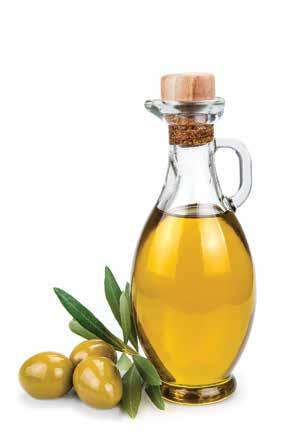
risk of cardiovascular disease. In addition, supplementation with omega-3 fatty acids has been associated with reduced cardiovascular disease risk and protection against neurodegenerative conditions. Incorporate olives, olive oil, nuts and seeds, wild fish, and fish oil supplements in your diet to reap the advantages of these healthy fats.
These tips, along with choosing whole grains instead of refined grains and water in place of sugar-laden drinks, and following eating patterns such as intermittent fasting, can help support your body’s physiological needs and get you on the road to a healthy and happy life.
Sea-licious is not only a tasty treat, but also the only fish oil made with astaxanthin – a powerful antioxidant. The fish oils also have the highest natural ratio of omega-3s EPA and DHA. This nutrition comes with an added guarantee for your family’s health. Sea-licious is tested pure and contaminant-free by ISURA®, and is also 5-star certified by IFOS™.








Enjoy Sea-licious on its own or as the perfect addition to your smoothie. Your whole family will love it!

 BY JENNIFER BRIX, ND
BY JENNIFER BRIX, ND
Bladder infections, or urinary tract infections (UTIs), are some of the most frequent clinical bacterial infections diagnosed in women, accounting for nearly 25% of all infections. With 50–60% of women experiencing at least one UTI in their lifetime, and antibiotics being prescribed for the vast majority, UTIs can have an astounding effect on more than just our bladders. Side effects aside, frequent antibiotic use can lead to antibiotic resistance, which is one reason a whopping 95% of recurrent UTIs are from reinfection.
From this, it’s obvious that “modern medicine” is no longer doing its job when it comes to the eradication of UTIs. We need to look to natural substances to see that there are other options out there. These options have shown clinical promise in not only treating, but also preventing recurrent infections.
CRANBERRY is probably the most well-known herbal medicinal treatment for UTIs. Cranberry contains proanthocyanidins, which help reduce Escherichia coli colonization. With E. coli being the most prevalent bacteria isolated in UTIs, cranberry, with its

impressive safety profile, is something to consider taking both preventatively and as a treatment if you are prone to bladder irritation.

Interestingly, PROPOLIS taken with cranberry may be an even bigger blow to the bacteria in our bladders. Propolis

is a resinous material collected by bees from plants and mixed with bee enzymes for use in their colonies to prevent bacterial and fungal growth. Propolis’s antimicrobial activities are well documented against different bacteria in humans. In a recent human clinical trial, it was shown for the first time that propolis potentiated the effect of cranberry proanthocyanidins on adhesion, motility, and biofilm formation of uropathogenic E. coli.
D-MANNOSE is another natural substance useful in treating and preventing E. coli-associated UTIs.

recurrent UTIs are
This simple sugar, found naturally in certain plants and fruits, can bind to the outer structure of bacteria, blocking their ability to stick to the urinary tract wall. In a review of randomized, controlled trials, researchers confirmed that D-mannose significantly reduced the risk of recurrent UTIs with minimal side effects.
With the emergence of antibiotic resistance, finding alternative treatments for UTIs is critical. Thankfully, researchers continue to study the effects of natural substances like cranberry, propolis, and D-mannose. With their ability to both treat and prevent the next UTI from coming down the pipeline, this tremendous trio is such an important consideration to help preserve the quality of life for the millions of women who experience UTIs every year.

95% of
from reinfection
25% of all infections diagnosed are UTIs
–
of women will experience at least one UTI in their lifetime









